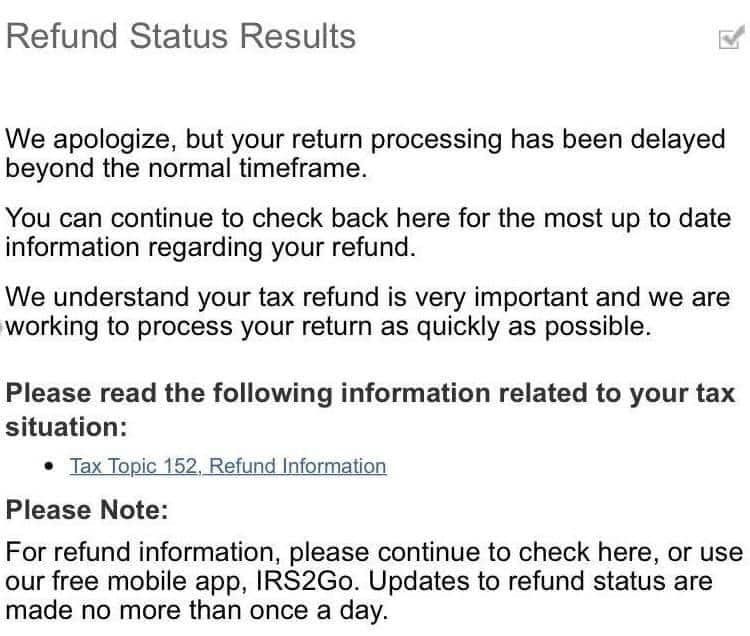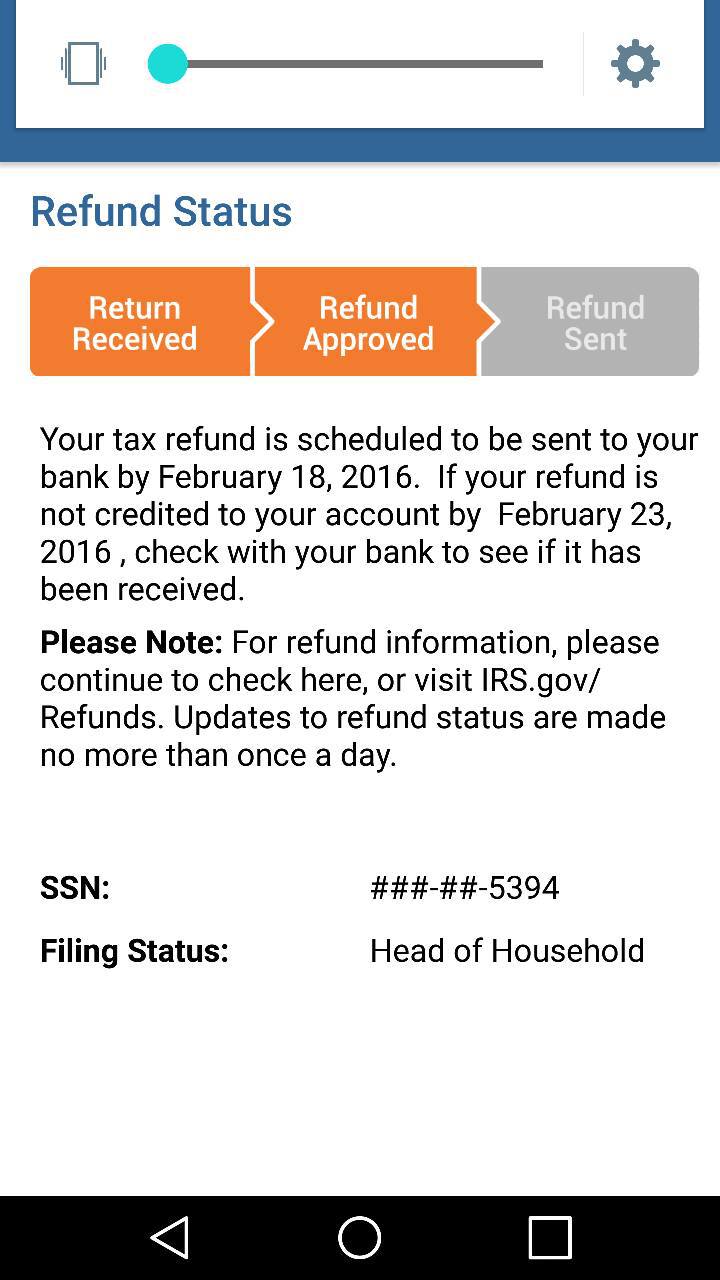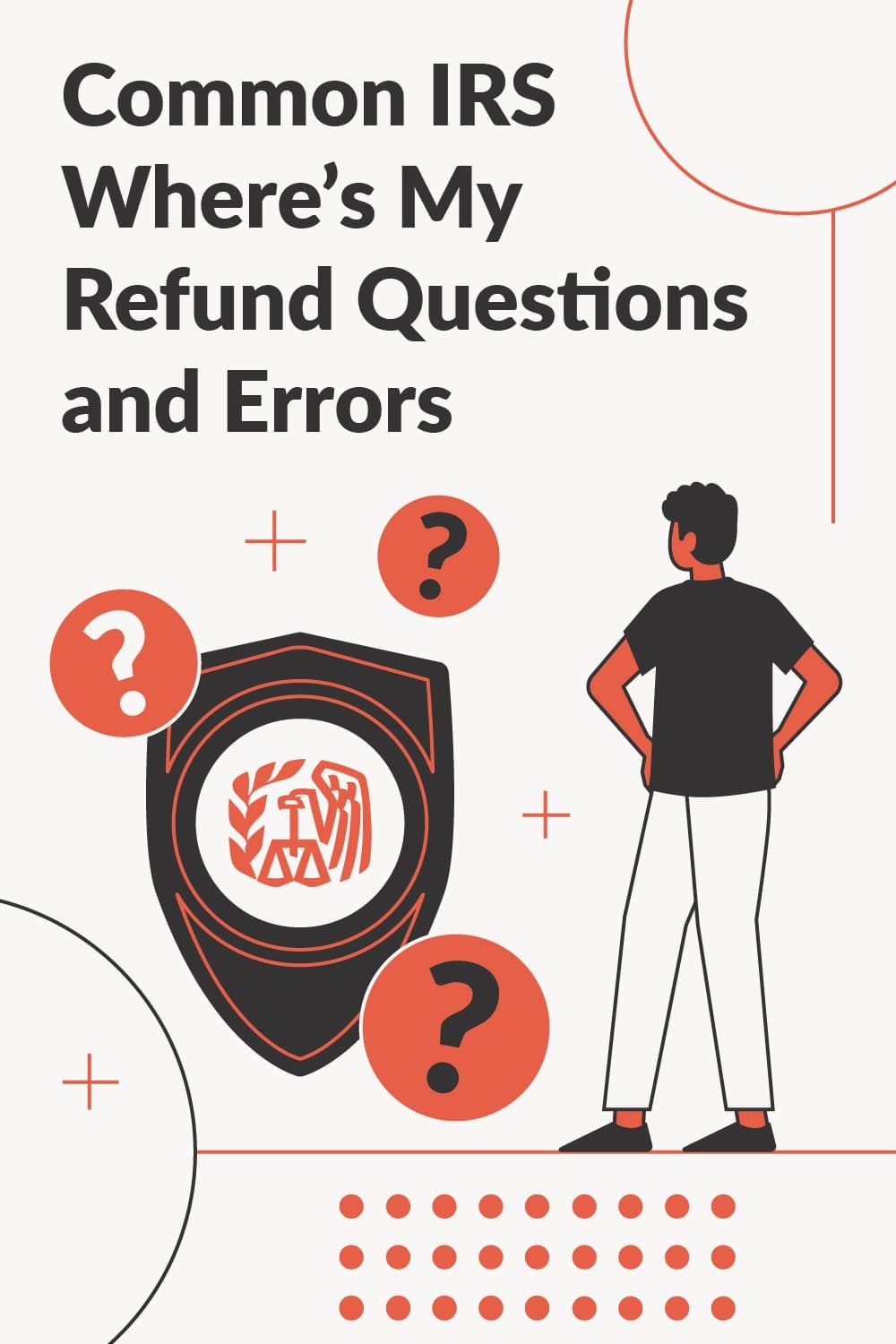
The IRS had made huge progress in trying to be transparent about the refund process. But, with every step forward, there are two steps back. The IRS used to publish an IRS refund calendar, but they discontinued that for the new "21 days for 90% of filers".
They have also introduced tools like Where's My Refund (now simply called Check My Refund Status) and IRS2Go, both designed to let filers see where their refunds are. But, like anything that deals with the impatient public, if things don't work right, it can be a struggle.
I get it, you want to know where your tax refund is, and dealing with the IRS can be both scary and challenging.
After hearing all types of questions over the years, here is our list of common IRS Where's My Refund questions, comments, concerns, errors, and more.
If you're seeing something not on this list, leave a comment and share your story so that we can keep track of issues as they arise, and hopefully help or reassure others in the future. Or, check out our Tax Center for more info.
What Does Tax Topic 151 Mean?
Are you getting the message "Tax Topic 151: Appeal Your Rights" when you log into Where's My Refund?
Tax Topic 151 means that you're getting a tax offset, which is where the Department of Treasury will be taking your refund to pay for something you owe.
What Does Tax Topic 152 Mean?
Tax Topic 152 means you're getting a tax refund. That's it!
The IRS has given guidelines this year that 90% of tax filers should receive their refund within 21 days of filing. The IRS works weekends during tax season, so it's 21 days, not "business days".
However, if you mail your tax return, your 21 days of processing starts when the IRS gets your actual paper documents into the system. As such, paper returns take up to 12 weeks or more to process.
If you want a good estimate, check out our tax refund calendar for 2023.
Refund Status Results Delayed
We're seeing a new message that is saying the following:
We apologize, but your return processing has been delayed beyond the normal timeframe. You can continue to check back here for the most up to date information regarding your refund. We understand your tax refund is very important and we are working to process your return as quickly as possible.
Here's a screenshot of what this looks like:

Our sources are telling us that this message is a system error. Specifically, it hasn't even been 21 days yet for most filers, so nobody's tax return is actually delayed yet. It appears that someone may have been working to program different error messages, and this flagged for users over the first weekend of February.
This appears very similar to the IRS Code 9001 error that plagued people a few years ago.
If you're seeing this message and it hasn't been 21 days yet, you don't need to worry. Otherwise, check our tax refund calendar here for an estimate of when you can expect your tax refund.
My Refund Was Accepted, When Will It Be Approved?
It's important to note that accepted and approved are two different things.
The IRS says your refund is accepted when your file is transmitted (or entered manually) into the system and the basic "check" matches. What are the basic checks? It means your name, Social Security number, dependents, and other information matches what was expected in the system. It also means that nobody else has filed a tax return with that information yet (which is a good thing - because that could mean identity theft).
Approved means that your tax return was approved based on what you submitted. It usually takes about 14 to 21 days for your return to be approved after it's accepted. It's at this point when you can start being excited to get your refund.
Why Does It Give Me A Direct Deposit Date, And Then Say Call If Not Received By Another Date?
When you get a direct deposit date, the system will tell you "Expect your refund on this date, but call if not received by XXX date". Why?
Basically, some banks take several days to process ETF transfers into accounts. The IRS will be sending the money on the date listed. However, your bank may not post it to your account for several days.
Note: one of the biggest problems we see here with direct deposits is that the name listed on the bank account doesn't match the tax return. This can be due to a spouse's or partner's name on the account, but it can also be due to identity theft - which is what the IRS is concerned about.
The bottom line is to make sure the name on your bank account matches your tax return information!
I Called And Verified My ID - Did I Have An Identity Theft Issue?
The IRS has been cracking down on identity theft for the last several years. This is a great thing, because a lot of people were becoming victims of tax refund identity theft.
However, a lot of people think they are "verifying their identity" when they call the IRS. And while this is true, it's not identity theft related.
Are You Sure I Had To Verify My ID?
I keep getting tons and tons of questions about ID verification, so I tracked down the IRS Operational Guidelines, and here is what the IRS is going to do whenever you call and inquire about your tax refund. This is straight from the IRS operational manual:
For purposes of identification and to prevent unauthorized disclosures of tax information, you must know with whom you are speaking, complete name and title and the purpose of the call/contact. It may be necessary to ask the caller or visitor if he or she is an individual taxpayer (primary or secondary), a business taxpayer (sole proprietor, partner, or corporate officer), or an authorized third party.
Inadequate authentication of the identity of a caller could result in an "unauthorized disclosure" of return or return information. If an IRS employee makes a knowing or negligent unauthorized disclosure, the United States may be liable for damages. See IRC section 7213, IRC section 7213A , and IRC section 7431. If an IRS employee makes a voluntary, intentional disclosure, the employee may be subject to criminal penalties including a fine, imprisonment, and loss of employment.
Required authentication probes:
- Taxpayer Identification Number (TIN),Social Security Number (SSN), Individual Taxpayer Identification Number (ITIN) – If the taxpayer is inquiring about a jointly filed return, only one TIN is necessary, preferably the primary number. The secondary TIN may be required if the primary is unavailable, or for use as an additional authentication check. See IRM 3.21.263.7.1 ,Disclosure Guidelines for ITIN Data , for specific ITIN research. Note: In the event the name and TIN provided by the caller at the beginning of the call do not match our records, ask the caller to verify their information. Terminate the call if, after probing, the information provided still does not match our records. Ask the caller to check their records and call back.
- Name – as it appears on the tax return (for the tax year(s) in question), including spouses name for joint return.
- Current address - If taxpayer fails to provide the correct address of record, but correctly responds to all of the other items, (IMF - name, TIN and date of birth) you may request additional taxpayer authentication pursuant to IRM 21.1.3.2.4, Additional Taxpayer Authentication. Note: If you are unable to verify the address on the Integrated Data Retrieval System (IDRS), request the address as it appears on the last tax return or as modified by IRS records.
- Date of birth (DOB) of primary or secondary taxpayer - If the taxpayer fails the DOB probe, but correctly responds to all other items above (name, TIN, address), you may request additional taxpayer authentication pursuant to IRM 21.1.3.2.4, Additional Taxpayer Authentication. Note: If there is a discrepancy with the DOB on IRS records (CC INOLE) but you are confident (taxpayer has passed authentication requirements) that you are speaking with the taxpayer, advise the taxpayer to contact the Social Security Administration (SSA) at 1-800-772-1213 to correct the error.
So what does that all mean? It means that you have to verify your identity whenever you contact the IRS! So stop worrying about it or thinking that it had anything to do with your return.
But The IRS Told Me To Wait 6 or 9 Weeks? Is That True?
No. If you had no issue with your account, you don't have to wait 6 weeks or 9 weeks. Even if you get an Error Code 9001, you don't have to wait.
Don't believe me? Well first, here's a screenshot from one of our readers who got the 9001 error on 2/5, and now has a direct deposit date:

Second, still don't believe me? Why would these IRS agents tell me that I need to wait? Because that's what the operations manual tells them to do.
We went digging because a lot of people were talking about it, and here's why they tell you this (this is straight from the IRS Operations Manual):
Call/Inquiry For Return Found, But Not Processes
If the return was received, but not processed, one of the following will happen:
- If a Letter 4464C or Letter 4115C was prepared and it has been 14 days or less from this date, inform the taxpayer he/she will receive a letter within the next two weeks.
- Advise the taxpayer their return was selected for review without disclosing the IVO involvement.
- Perform additional authentication per IRM 21.1.3.2.4, Additional Taxpayer Authentication, and if the caller passes, prepare e-Form 4442 to IVO, using category "RICS IVO Complex issue not ID Theft." Include authentication results in AMS. Advise the taxpayer they should receive further information or their refund within 6 weeks from the initiation of the e-4442.
That sounds scary, but what does each of them mean?
The letter means additional information is required. They will tell you what to expect. If you're selected for review, they will tell you and will not hide this fact. It doesn't necessarily mean anything, and about 1% of returns are selected every year randomly.
This means they honestly don't know what you're calling them because your return is in process. eForm 4442 just documents the fact you called and it's not ID theft. If they suspect you are a victim of identity theft, they fill out a different form. The advice of 6 weeks is simply because they have no issues with your return, so wait and see if they do! If you call back, the same rules apply - they will simply document it and tell you to wait 6 weeks.
So where did the 9 weeks come from? We couldn't find it anywhere, but we think that it has to do with reps really trying to advice you NOT to call, because you don't have to!
What Does Return Received vs. Refund Approved Mean?
When you file your refund, the first bar you're waiting for is for your "Return to be Received". This only means that the IRS was able to process your return. It has nothing to do with anything other than a system check that your return was valid.
The next bar is "Refund Approved". This means that your tax refund was approved and you should be getting a direct deposit date (or check mailed).
The final bar is "Refund Sent", which means that the IRS has sent your refund by check or direct deposit.
I Lost All My Bars, Or I Have No Bars
Some Where's My Refund users have reported losing all their bars, or no bars are showing up.
This means NOTHING.
Typically, this is more of a website/programming issue, than a system or status issue. It might have to do with your web browser or phone. It might have to do with the IRS systems being overloaded with traffic.
Regardless, it means nothing for you as the person waiting for a tax refund.
What Day Of The Week Does The IRS Deposit Direct Deposits
Refunds used to be processed by the IRS just two times per week. However, now the IRS deposits refunds every business day.
It's important to note that the IRS processes your information, and then sends that data to the Treasury Department for actual payment processing.
If you're hoping to get your tax refund a few days early, check out these banks that allow you to get your tax refund early.
Is The Where's My Refund System Down?
The IRS works hard to ensure that all systems are up and running all the time. However, there is both planned downtime and unexpected downtime.
The IRS plans downtime for the WMR system every Monday, early, from 12 a.m. (Midnight) to 3 a.m. Eastern Time.
I'm Getting An Error Code 9001
IRS Error Code 9001 is becoming a very common error code that a lot of people are reporting on Where's My Refund.
But what does it mean? According to the IRS, all it means is that the Where's My Refund system (or IRS2Go) was accessed by a secondary SSN on the return.
Some of the common themes I see with this are:
- Wife accessed the return, but husband was primary filer
- Kids accessed the return, but parents were primary filers
- Family isn't communicating and telling the other person they accessed it
- Typos - Typo on the return or typo entered information on WMR
The bottom line is that IRS Code 9001 means NOTHING for your return status. It has nothing to do with identity theft directly (but it could), and it is no reason to call the IRS. For more information, see our detailed write-up on IRS Code 9001.
I'm Getting An Error Code, What Does It Mean?
There are about 100 different error codes that could happen using Where's My Refund. The IRS is very detailed, and has a system or process for everything. If you're getting an error code when logging into WMR, here what to do.
Check out our list of all the IRS Where's My Refund Error Codes.
Once you know your code, you might need to call the IRS, or you might need to wait for them to send you a letter explaining what happened.
Some of the common error codes simply have to do with typos. Make sure you double-check your return!
What questions do you have? What are you seeing out there?

Robert Farrington is America’s Millennial Money Expert® and America’s Student Loan Debt Expert™, and the founder of The College Investor, a personal finance site dedicated to helping millennials escape student loan debt to start investing and building wealth for the future. You can learn more about him on the About Page or on his personal site RobertFarrington.com.
He regularly writes about investing, student loan debt, and general personal finance topics geared toward anyone wanting to earn more, get out of debt, and start building wealth for the future.
He has been quoted in major publications, including the New York Times, Wall Street Journal, Washington Post, ABC, NBC, Today, and more. He is also a regular contributor to Forbes.
Editor: Clint Proctor Reviewed by: Chris Muller
